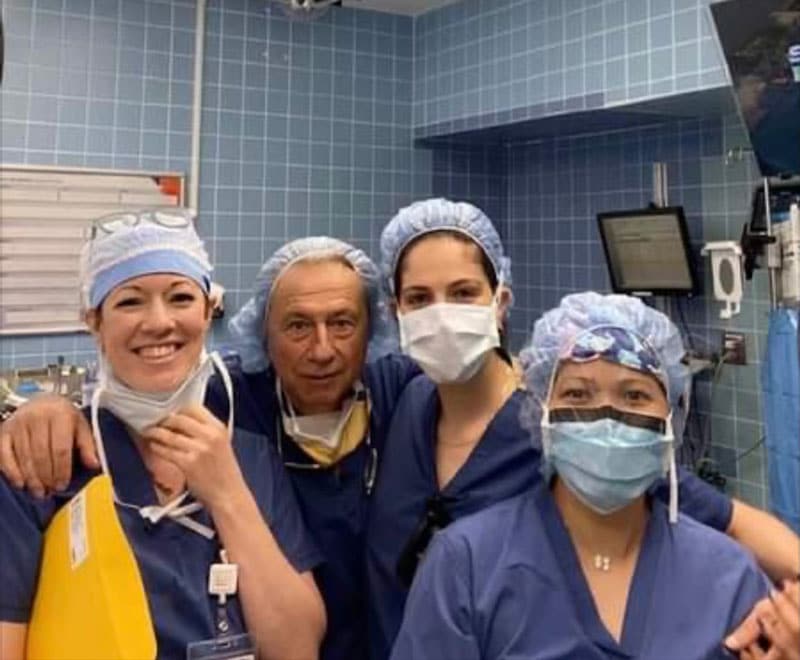Laser Ablation Versus Excision Surgery for Endometriosis
The two main surgical methods to treat endometriosis include laparoscopic ablation or excision. Although some surgeons still use ablation, laparoscopic deep excision surgery for endometriosis is the gold standard.

What is excision surgery for endometriosis?
Excision refers to the process of removing abnormal cells and tissues from affected organs. In the case of endometriosis, this refers to the process of removing endometriosis lesions from affected areas.
Endometriosis can spread to areas other than the pelvic region. Excision surgery can remove these lesions and reduce the symptoms of the disease like pelvic pain, painful periods, and painful sex.
How do surgeons perform excision surgery for endometriosis?
Surgeons usually perform excision surgery for endometriosis through laparoscopy, a minimally invasive technique where small cuts are made ( < 1cm). They fill the abdomen with carbon dioxide gas and insert a high-definition camera in order to fully see the inside of the abdomen.
Advances in laparoscopy now enable the surgeon to carry out precise and complete endometriosis excision surgery.
With laparoscopy, compared to laparotomy (open surgery), there are overall fewer complications after the operation, shorter recovery times, and improved pain control.
What is laser ablation?
Ablation, also commonly referred to as fulguration or cauterization, is the process of using heat to destroy abnormal cells. If the source of heat is a laser, it is laser ablation or laser vaporization. In this method, the surgeon burns or vaporizes the endometriosis lesion using energy from a laser.
Laser ablation is a quick way of burning visible lesions on the surface, but can bring more harm than good.
What are the disadvantages of laser ablation?
Laser ablation brings with it a number of drawbacks both to the surgeon and the patient.
Firstly, only a biopsy sample can confirm a diagnosis of endometriosis. Laser ablation destroys the lesion thereby preventing pathological confirmation of the disease.

Moreover, laser ablation chars the surface of a lesion. However, certain endometriosis lesions behave like an iceberg where only the tip is visible on the surface and the major body remains below. Therefore, ablation will leave the root of the issue behind. In fact, research has shown that recurrence rates of endometriosis are usually between 40% and 60% within the first couple of years of initial laser ablation.
Endometriosis can occur in other regions and above crucial structures such as the ureters, bladder, and diaphragm. Laser ablation in these areas can cause damage to healthy tissues leading to further complications.
Our approach at the Seckin Endometriosis Center
Surgeons at the Seckin Endometriosis Center have further improved the effectiveness of excision surgery for endometriosis.
With new advances such as robotic-assisted laparoscopic surgery, the surgeons at Seckin Endometriosis Center have adopted this modality for specific patients. For many patients, we still believe in a traditional laparoscopic approach as this allows for more tactile sensation and haptic feedback in dealing with lesions, scars, and adhesions.
Moreover, our patented Aqua Blue Contrast(TM) technique helps us recognize early-stage lesions. We believe in the complete excision of all lesions at an early age with the goal of preventing the progression of the disease and of recurrence.
Excision is performed using cold scissors to avoid any form of ablation or high energy, thus overcoming the limitations of laser ablation.
Did you talk to your doctor about the different endometriosis surgery techniques? Did you know about excision or ablation? Tell us by leaving a comment on our post on Facebook or Instagram.
Get a Second Opinion
Our endometriosis specialists are dedicated to providing patients with expert care. Whether you have been diagnosed or are looking to find a doctor, they are ready to help.Our office is located on 872 Fifth Avenue New York, NY 10065.
You may call us at (646) 960-3080 or have your case reviewed by clicking here.